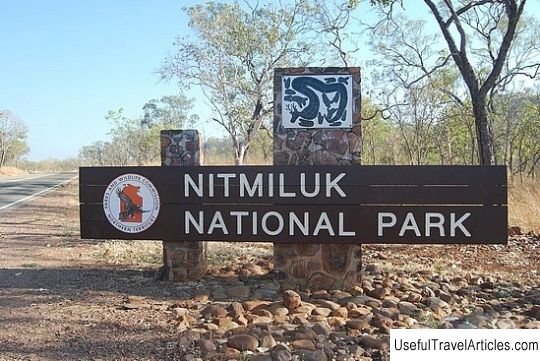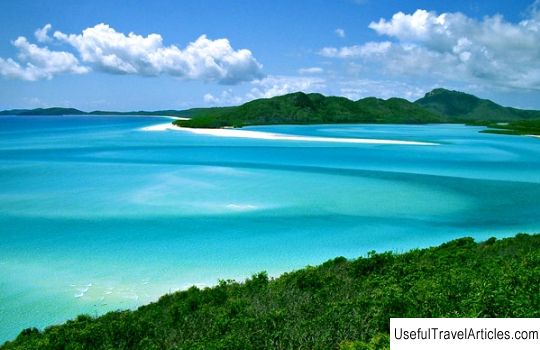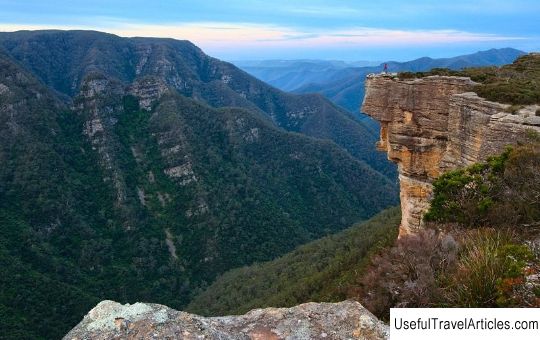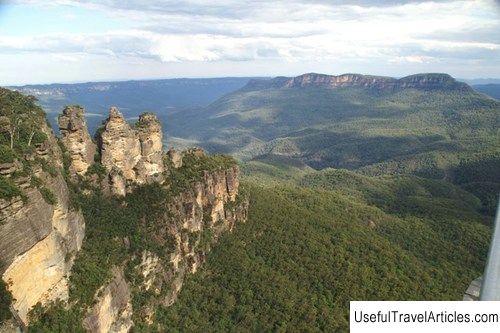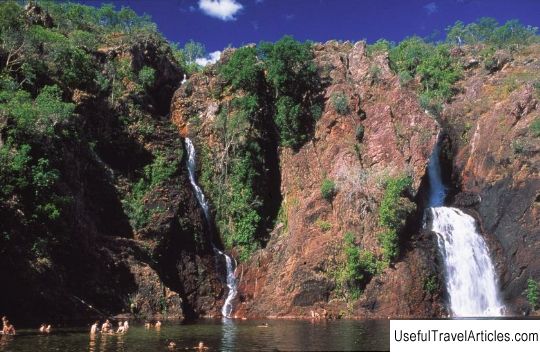Kakadu National Park description and photos - Australia: Darwin
Rating: 8,7/10 (6807 votes) 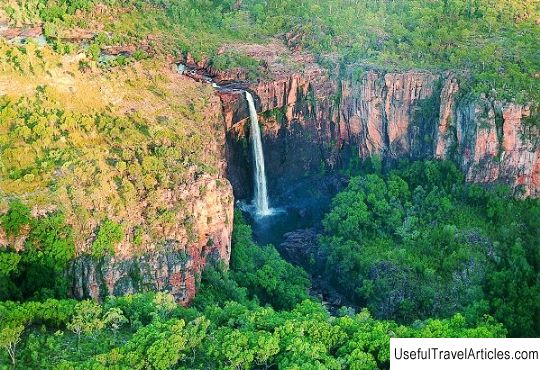
Cockatoo National Park (Kakadu National Park) description and photos - Australia: Darwin. Detailed information about the attraction. Description, photographs and a map showing the nearest significant objects. The name in English is Kakadu National Park. Photo and descriptionKakadu National Park, located 170 km from Darwin, is an obligatory part of the program of tourists coming to northern Australia. They are attracted by the breathtaking landscapes, aboriginal culture and abundance of wildlife. The park is home to many popular waterfalls and gorges such as Maguk, Gunlom, Twin Falls and Jim Jim Falls. The country's largest national park stretches for 200 km from north to south and more than 100 km from east to west in the Alligator Rivers region. The total area of the park is equal to the area of Slovenia, or almost half the area of Switzerland. The name of the park does not come from the name of the picturesque cockatoo bird, but from the incorrect pronunciation of the word “Gagadju”, this is the name of the language, spoken by the aborigines living in the northern part of the park. Cockatoo is surprisingly diverse in ecological and biological respects. Here, 4 river systems, 6 large landscape forms, river estuaries and swampy lowlands, river floodplains, plains, mountain heights, more than 280 bird species, about 60 mammalian species, 1,700 plant species and more than 10 thousand insect species are taken under protection! Aborigines have lived in this area for the past 40 thousand years, and their cultural and household items are also protected in the park - here you can find more than 5 thousand places associated with aboriginal history. At the sites of Ubirr, Burrungai and Nanguluvur, there are unique examples of rock art of the ancient inhabitants of these places. Among the drawings are images of hunters and shamans, stories told for posterity about the creation of the world. About half of the park is owned by the Aboriginal tribes of the Northern Territory, and, according to the law, the Park Directorate leases this land for the management of the national park. The aborigines living today on the territory of "Kakadu" (there are about 5 thousand of them) are the descendants of various tribes that have lived here since ancient times. Their lifestyle has changed in recent years, but their traditions and beliefs remain an important part of their culture. The first non-native explorers of Australia's northern coastline included the Chinese, Malays and Portuguese, and the Dutch left the first documented description. In 1644, Abel Tasman was the first to write a description of the contacts between Europeans and aborigines. A century and a half later, Matthew Flinders explored the Gulf of Carpentaria in 1802-1803. Between 1818 and 1822, the English navigator Philip Parker Keane visited the bay, who called this area the Alligator Rivers because of the huge number of crocodiles. In the middle of the 19th century, British settlements began to appear on the territory of the future Kakadu Park with varying success, and by the end of the century - the first missionaries. In the 20th century, gold and uranium were mined here. Kakadu was founded during the years when Australian society became interested in the creation of national parks to conserve biodiversity and recognize Aboriginal land rights. Back in 1965, a project was developed to create a park in the Alligator Rivers region, but it was not until 1978 that the Australian Government agreed to lease these lands for conservation purposes. The current territory of the park was part of it in three stages from 1979 to 1991. The Kakadu flora is one of the richest in northern Australia, with over 1,700 plant species registered here! Moreover, each geographical area of the park has its own unique flora. For example, on the territory of the so-called Stone Country, rocky vegetation predominates, which has adapted to extremely hot temperatures and prolonged droughts, alternating with periods of heavy rains. Monsoon forests - huge banyans and thorny kapoks with soft scarlet flowers - grow in cool, humid gorges. In the southern hills, you can find endemic plants that grow only in the "Cockatoo", such as the eucalyptus koolpinensis. In the swampy lowlands, flooded for several months of the year, sedge, mangrove trees, pandanas and cinchona. The diverse habitat in the park supports a striking variety of animals, some of which are endemic, rare and endangered. Given the extreme weather conditions in the park, many animals are only active at certain times of the day or season. On the territory of "Kakadu" there are about 60 species of mammals, most of them are nocturnal, which makes it difficult to meet them. But there are also those that can be seen during the day, for example, wallabies and kangaroos (there are 8 types of them here!). Other common inhabitants of the park include wild dingo dogs, black wallaru (mountain kangaroos), speckled marsupial martens, large marsupial rats, and brown bandicoots. Dugongs are found in coastal waters. The cultural and natural value of the Kakadu Park is internationally recognized - in 1992 the national park was included in the UNESCO List of World Natural and Cultural Heritage Sites.        We also recommend reading Center for the Arts (Centro das Artes - Casa das Mudas) description and photos - Portugal: Calheta (Madeira Island) Topic: Kakadu National Park description and photos - Australia: Darwin. |
